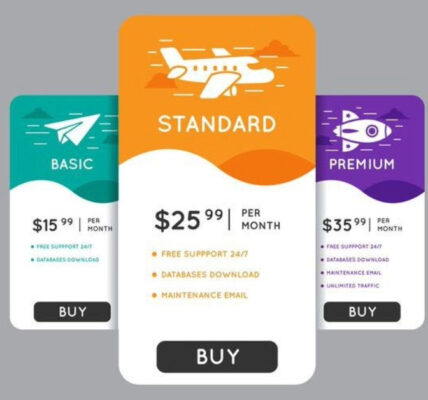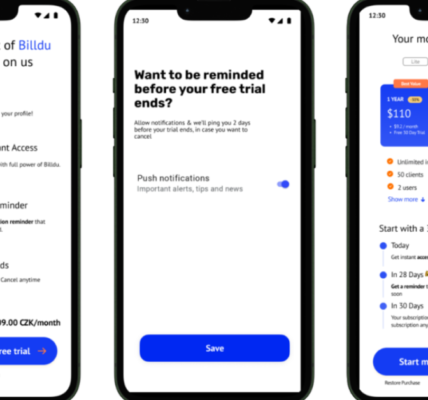Churn is the silent killer of indie apps. You might be attracting new users, but if they don’t stay subscribed, your revenue stagnates—or worse, declines. High churn rates mean you’re constantly replacing lost users instead of growing your customer base.
One of the most overlooked factors in reducing churn is paywall optimization. If your paywall isn’t designed to convert and retain users effectively, you’re leaving money on the table. A poorly timed, confusing, or rigid paywall can drive users away before they even experience the value of your app.
In this guide, we’ll explore how smart paywall optimization can help reduce churn, improve conversions, and create a more sustainable revenue stream for your indie app.
Understanding the Role of Paywalls in Churn Reduction
A paywall isn’t just a transactional barrier—it’s a critical touchpoint that can shape the entire user experience. If done right, it encourages users to subscribe and stay subscribed. If done wrong, it increases frustration and drives cancellations.
The best paywalls:
- Clearly communicate the app’s value.
- Appear at the right time in the user journey.
- Offer flexible pricing and subscription options.
- Make the payment process smooth and frictionless.
By optimizing these elements, you can significantly reduce churn and increase retention.
Timing Your Paywall for Maximum Impact
One of the biggest mistakes indie developers make is showing the paywall too soon—or too late. If users see a paywall before they understand your app’s value, they’re likely to leave. But if you wait too long, they might engage with the app but never convert to a paying customer.
The Problem with Immediate Paywalls
Apps that show a paywall immediately upon launch tend to have lower conversion rates. New users have no idea what they’re paying for, so they leave before even trying the product.
Solution: Allow users to experience key features before introducing the paywall. This can be done through:
- Feature-based trials: Let users access premium features for a limited number of actions before triggering the paywall.
- Timed trials: Give users full access for a few days before asking them to subscribe.
Delayed Paywalls Can Also Backfire
While waiting too long might seem like a safer bet, it can also reduce conversion rates. If users engage deeply with your app without encountering a paywall, they may assume the app is free and resist subscribing when asked.
Solution: Place your paywall at the moment of highest engagement—right after users complete an action that demonstrates your app’s value.
For example:
- A fitness app could introduce a paywall after a user completes their first workout.
- A language learning app could show it after a user completes their first lesson.
- A productivity tool could trigger it once a user creates a certain number of tasks.
Designing a High-Converting Paywall
Even with perfect timing, a poorly designed paywall can still drive users away. The key to a high-converting paywall is clarity, simplicity, and strong messaging.
Keep the Messaging Focused on Value
A common mistake is making the paywall all about price instead of value. Users don’t care about the cost—they care about what they get in return.
Instead of:
“Subscribe for $9.99/month”
Try:
“Unlock unlimited workouts, personalized coaching, and exclusive content for just $9.99/month.”
Clearly outline the benefits, using concise and persuasive language.
Minimize Friction in the Checkout Process
A complicated checkout process increases the chances of users abandoning the paywall. Ensure that:
- The subscription button is highly visible.
- There’s minimal scrolling required to see pricing options.
- The payment process is smooth with support for Apple Pay, Google Pay, and credit cards.
Offering Flexible Pricing and Subscription Options
Rigid pricing structures can push potential subscribers away. Users have different budgets and commitment levels, so offering multiple options can improve conversions and reduce churn.
Monthly vs. Annual Plans
Many indie developers default to offering a single subscription plan, but providing both monthly and annual options can boost revenue and retention.
- Monthly plans lower the barrier to entry and appeal to users hesitant about a long-term commitment.
- Annual plans reduce churn by locking in users for a longer period and often provide better lifetime value.
Consider offering a discount on annual plans to encourage long-term commitments.
Trial Periods and Introductory Pricing
Free trials and introductory discounts can help hesitant users make the leap. A well-structured trial can increase conversion rates and long-term retention.
Best practices for trials:
- Keep them long enough for users to experience the value (7–14 days is ideal).
- Require payment details upfront to reduce friction at the end of the trial.
- Send reminder emails before the trial ends to reduce involuntary churn.
Addressing and Preventing Subscription Cancellations
Even if your paywall converts well, users may still cancel their subscriptions. The key is to understand why they’re canceling and address those pain points proactively.
Collect and Act on Cancellation Feedback
When users cancel, ask them why. A simple exit survey can provide valuable insights. Common reasons for churn include:
- Price is too high.
- Didn’t use the app enough.
- Couldn’t see the value.
Once you identify patterns, take action:
- If pricing is a major issue, consider offering a discounted retention offer.
- If users aren’t engaging, improve your onboarding flow to highlight key features.
- If value perception is low, improve your paywall messaging to better communicate benefits.
Offer a “Pause Subscription” Option
Some users cancel because they don’t need the app right now—but they might return later. Instead of forcing them to cancel completely, offer a “pause” option. This keeps them within your ecosystem and increases the likelihood of reactivating later.
Reducing Involuntary Churn with Smart Payment Handling
Not all churn is intentional. Involuntary churn happens when a user’s payment method fails, leading to an automatic cancellation.
Implement Smart Dunning Strategies
Dunning refers to the process of recovering failed payments. A good dunning strategy includes:
- Pre-dunning reminders: Notify users before their payment method expires.
- Smart retries: Automatically retry failed payments at strategic intervals.
- In-app prompts: Display a message prompting users to update their payment details if a payment fails.
By proactively managing failed payments, you can recover revenue that would otherwise be lost.
Leveraging Data to Continuously Improve Paywall Performance
Optimizing your paywall isn’t a one-time task—it requires ongoing testing and refinement.
A/B Test Different Paywall Variations
Run A/B tests to compare different elements, such as:
- Headline messaging.
- Pricing options.
- Trial lengths.
- Visual design.
By analyzing user behavior, you can identify which variations drive the highest conversions and retention.
Track Key Metrics to Identify Weak Points
Monitor these KPIs to measure your paywall’s effectiveness:
- Conversion Rate: Percentage of users who subscribe after seeing the paywall.
- Trial-to-Paid Conversion Rate: How many trial users convert to paying subscribers.
- Churn Rate: Percentage of subscribers who cancel each month.
By regularly reviewing these metrics, you can make data-driven improvements that reduce churn and increase revenue.
Conclusion
Reducing churn for your indie app starts with smart paywall optimization. A well-designed, strategically timed, and frictionless paywall can significantly improve conversions and long-term retention.
To optimize your paywall:
- Time it at the right moment in the user journey.
- Craft compelling messaging that highlights value.
- Offer flexible pricing options, including trials and annual plans.
- Address cancellation reasons and reduce involuntary churn with better payment handling.
By continuously testing and refining your paywall, you can create a more sustainable subscription model and reduce churn, setting your indie app up for long-term success.




